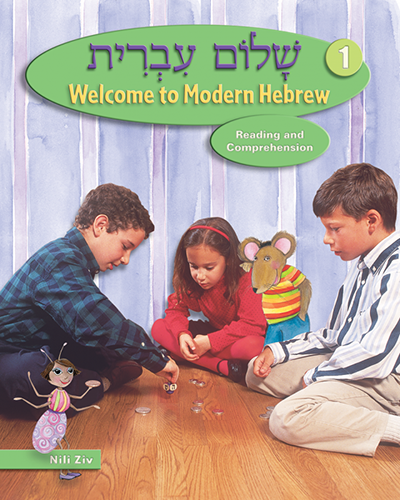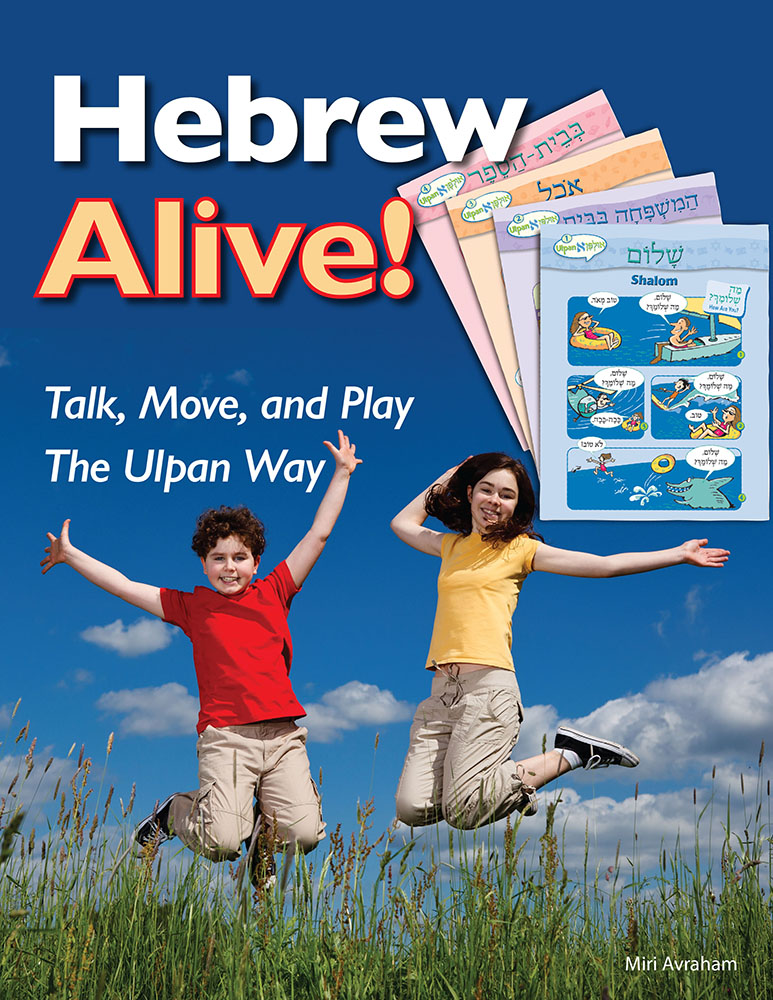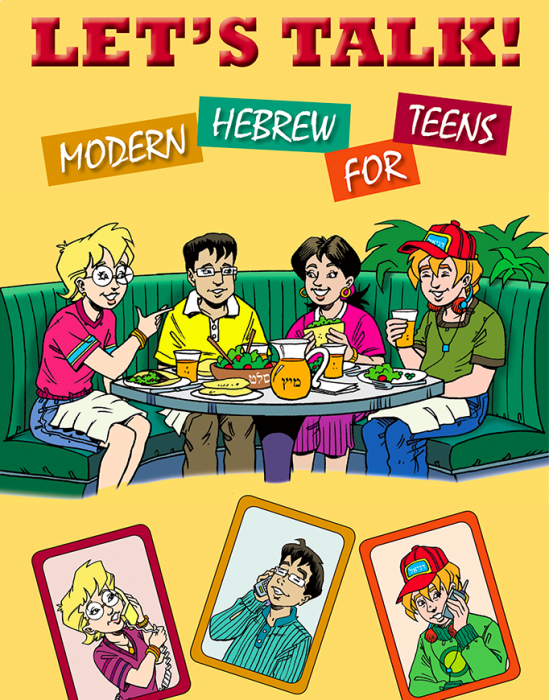First-Class Hebrew Curriculum Options for Grades 5-6
As we all know, there is no single magic bullet to ensure our students connect to the language of their tradition.
It would be easy if the only choice of Hebrew approach were one-size-fits-all. But there’s no single way. The goals for learning Hebrew in vary from one community to the next.
Our job as educators is to provide learners with real opportunities to use Hebrew in a way that aligns with the community's goals. Over the last century we have seen educational programs of all flavors and have a deep level of expertise in identifying solutions that match goals and resources. We know that Hebrew learning can be deep and fun and meaningful because we see it often, and in many different packages.
As you're thinking about your Hebrew program for the upcoming year, we're highlighting some of our tried and true programs for grades 5-6. These are years when enrollment and participation in congregational religious schools often are at their peak. Why settle for anything less than the best? These high quality materials have been created by experienced master Hebrew educators, based on sound pedgagogy, and can be customized for your needs: Pay for just what you need and supplement with whatever you want. PLUS, there are robust teacher and supplemental resources to support you and your learners.
Goal: Prayer Skills and Meaning
 Hebrew in Harmony focuses on learning prayer through music. This groundbreaking, multi-modal curriculum combines music, art, videos, and games - plus lots of contemporary music, of course - to help students practice prayer and create meaning from it.
Hebrew in Harmony focuses on learning prayer through music. This groundbreaking, multi-modal curriculum combines music, art, videos, and games - plus lots of contemporary music, of course - to help students practice prayer and create meaning from it.
Developed over five years, the curriculum was designed to be flexible and reach across denominations and various learning environments – whether at home, in person, or a combination. Twenty-two prayers are available as separate modules, and you only teach the ones you want, in any order you choose. Use it as a three-year curriculum or with just a single class - you decide what works best for your program.
“Our Hebrew program has excelled this year in many ways because of Hebrew in Harmony. The curriculum works really well," says David Scott, director of lifelong learning at Congregation Beth Israel in Houston, which uses the program for grades 4-6.
Goals and Enduring Understandings for each module of Hebrew in Harmony can be found here.
All components of the curriculum - student booklets for each prayer, lesson plans, companion app - are available separately.
 Hineni is a classic for a reason. This three-volume curriculum focuses on prayer skills and literacy from the Shabbat evening and morning services to blessings and songs for home holiday observances, with a dash of Hebrew roots.
Hineni is a classic for a reason. This three-volume curriculum focuses on prayer skills and literacy from the Shabbat evening and morning services to blessings and songs for home holiday observances, with a dash of Hebrew roots.
It also covers the order of the prayer services, and students learn to translate key prayer words, identify important Hebrew roots, prefixes, and suffixes, and participate comfortably in any prayer service.
Hineni also includes variations in liturgy for Reform and Conservative services, and some Reconstructionist variations are also available.
The curriculum is deeply resourced, with teacher guides, word cards, supplemental workbooks, script writing, and family companions all available for additional support.
Goal: Hebrew as a Living Language
 Shalom Ivrit: Welcome to Modern Hebrew introduces students to modern Hebrew with simple grammar through characters who reflect the same interests and experiences of your students - at home, camp, and with frinds. Through conversations and stories, Shalom Ivrit teaches hundreds of new words through increasingly complex stories and simple conversations in Hebrew. This three-part series also includes basic grammar such as present and past tense and singular/plural.
Shalom Ivrit: Welcome to Modern Hebrew introduces students to modern Hebrew with simple grammar through characters who reflect the same interests and experiences of your students - at home, camp, and with frinds. Through conversations and stories, Shalom Ivrit teaches hundreds of new words through increasingly complex stories and simple conversations in Hebrew. This three-part series also includes basic grammar such as present and past tense and singular/plural.
The curriculum can be taught with or without a prayer component. The prayer companion, also available in three volumes, covers blessings for home and Shabbat and holiday synagogue services. The sections are tied together thematically with the Shalom Ivrit student material.
Support materials include teacher guides, an optional audio component and wordcards for all vocabulary.

Hebrew Alive! Talk, Move, and Play the Ulpan Way is movement-based fun way of introducing students to conversational Hebrew. These short mini-lessons can be used independently for conversational Hebrew in as little as ten minutes a day or as a year-long course.
The more often students are exposed to Hebrew and practice using it, the stronger their language skills will be. Research shows that effective Hebrew learning comes from regular exposure to authentic language in various ways, including listening and speaking. Further, the best language connections come from using Hebrew in creative ways.
Hebrew Alive is a curriculum guide for teachers that uses active, movement-based activities to give children functional language to practice conversations in real-life situations, such as introducing themselves, going shopping, inviting a friend to a birthday party, and telling time. All activities include children responding to or producing Hebrew language at their own level. Download sample Hebrew Alive activity guide and directions.

Let's Talk! creates storytelling and conversation-based opportunities for spoken practice, and include audio components to reinforce pronunciation.
Learners follows four pre-teens as they tour around Israel in a shop, a party, swimming and celebrating, and provides ample opportunity for ulpan-style conversations. It practices grammar through fun, hands-on activities while immersing students in the daily life and culture of modern Israel.
Strong Hebrew programs have a clear rationale, a reason for doing what you're doing. Knowing your end goal provides you the necessary filter and foundation upon which to structure learning experiences, create effective lessons, choose appropriate materials, and develop benchmarks. Download the Consider Your Goals guide.
This guide - plus more! - is available on the Behrman House website, under the Plan section.
Many of the Hebrew materials are also available with online turn-page access for easy access during remote learning. Learn more about our turn-page materials here.
Keep up with the latest information by subscribing to our newsletter and connect with us on social media!



